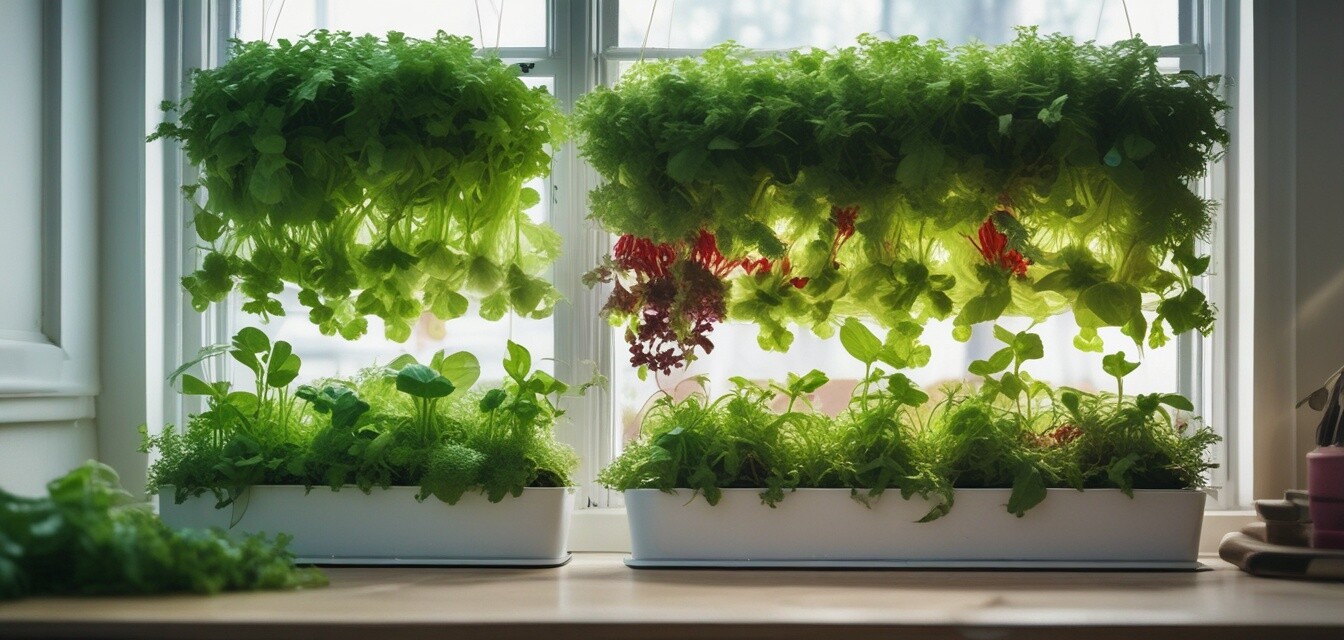
Setting Up a Hydroponic Garden for Beginners
Key Takeaways
- Hydroponics is a soil-free gardening method utilizing nutrient-rich water solutions.
- There are different types of hydroponic systems, each with their own advantages.
- Basic materials needed include a growing medium, nutrient solution, and a water reservoir.
- It's essential to monitor pH and nutrient levels for successful plant growth.
- Start with easy-to-grow plants like herbs and leafy greens for your first hydroponic garden.
Hydroponic gardening offers a unique way to grow plants indoors without the need for soil. This method leverages nutrient-rich water solutions to nourish plants directly at the roots, allowing for optimal growth conditions irrespective of outdoor climate. If you're looking to delve into the world of hydroponics, this guide will provide you with all the essential steps to set up a basic hydroponic garden successfully.
What Is Hydroponics?
Hydroponics is a gardening method where plants are grown in a controlled environment using a nutrient solution. This technique is popular for its efficiency in water use and the ability to cultivate healthy plants in urban settings or places with poor soil quality.
Types of Hydroponic Systems
Before diving into the setup process, it’s essential to understand the various types of hydroponic systems available:
| Hydroponic System | Description | Pros | Cons |
|---|---|---|---|
| Deep Water Culture (DWC) | Plants are suspended in a nutrient solution with their roots submerged in a reservoir. | Simple setup, fast growth. | Oxygen levels must be monitored closely. |
| Nutrient Film Technique (NFT) | A thin film of nutrient solution flows over plant roots. | Efficient use of nutrients, good aeration. | Requires constant monitoring of solution flow. |
| Drip System | Nutrient solution is dripped onto plant roots at intervals. | Flexibility in plant arrangement, easy to automate. | Potential for clogging in the drip lines. |
Basic Materials Needed
Setting up a hydroponic system requires some basic materials, which can vary based on the system type you choose:
- Growing Medium: Options include rock wool, clay pellets, or coconut coir.
- Nutrient Solution: Choose a hydroponic nutrient solution appropriate for the plants you want to grow.
- Water Reservoir: This holds the nutrient solution for your plants.
- Pump and Air Stone: Used in some systems to provide aeration to the water.
- pH Testing Kit: Essential for monitoring the pH levels of the nutrient solution.
Steps to Set Up Your Hydroponic Garden
Now that you understand hydroponics and have gathered your materials, follow these simple steps to set up your garden:
- Choose Your Location: Find a suitable spot with sufficient light or use grow lights.
- Prepare Your System: Depending on the type of hydroponic system, set up your growing containers and reservoir.
- Add Growing Medium: Fill your containers with your chosen growing medium.
- Mix Nutrient Solution: Prepare your nutrient solution according to instructions.
- Plant Your Seeds/Seedlings: Place seeds or seedlings in the growing medium.
- Monitor Your System: Regularly check pH and nutrient levels to ensure optimal growth conditions.
Growing Tips for Beginners
Beginner Tips
- Start with easy-to-grow plants like basil, lettuce, or spinach.
- Invest in quality grow lights if natural sunlight is limited.
- Regularly clean your system to prevent algae and bacterial growth.
- Keep a journal to track plant growth and environmental conditions.
- Be patient, as some plants take time to thrive!
Common Challenges
As with any gardening method, there can be challenges when setting up a hydroponic garden. Here are some common issues and tips on how to solve them:
- Algae Growth: Keep your nutrient solution covered to block light.
- Root Rot: Ensure adequate oxygen supply and avoid overwatering.
- Pests: Watch out for common pests and use appropriate organic pest control methods.
Exploring Advanced Hydroponics
Once you're comfortable with basic hydroponic gardening, consider exploring more advanced systems, such as aquaponics or vertical hydroponics. These methods can maximize your growing space and yield.
For more in-depth information, check out our guides on buying hydroponic supplies, hydroponic systems, and nutrient solutions.
Conclusion
Setting up a hydroponic garden can be a rewarding experience, providing you with a sustainable supply of fresh herbs and vegetables right at home. By following the steps outlined in this guide, you'll be well on your way to enjoying the fruits of your labor. Happy gardening!

